On a sweltering Saturday morning that felt more August in the tropics than June in the MidAtlantic, a group of volunteers gathered in a meadow about one mile upland from Bacon Ridge Branch, a tributary of Maryland’s South River, which flows directly into the Chesapeake Bay. Loaded with shovels, loppers, sledgehammers, a chain saw, and bundles of wooden stakes, the group hiked down into the stream valley and prepared to spend the day acting like members of a beaver colony: literally.

Before they were nearly extirpated in the 1800s by the fur trade, beaver are believed to have sculpted the stream valleys, waters, and wetlands of North America. In doing so, they naturally created the conditions that practitioners of stream restoration strive to achieve: raised water tables, reconnection and expansion of floodplains, improved water quality, and diverse wildlife habitat above and below the surface of the water. Beaver build dams to create deep water in order to avoid predation and get easier and safer access to food.
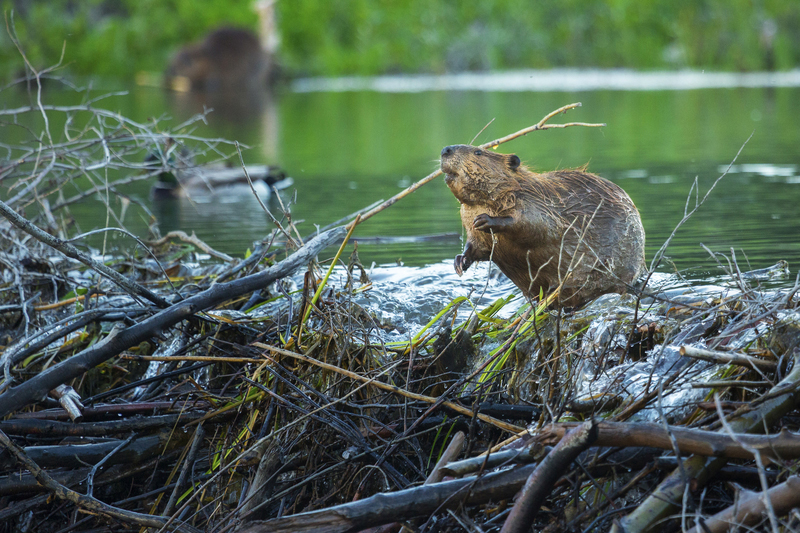
Bacon Ridge Branch, named for the pigs that once roamed the site after the watershed was deforested, had become eroded and degraded by stormwater runoff and a history of poor livestock management practices. With six-foot-high banks in some places, the stream was so eroded, it had become an expressway for stormwater to flow into the South River. In 2019, Biohabitats helped the Arundel Rivers Federation, a nonprofit partner of 1% for the Planet dedicated to protecting the South River and two other major tributaries to the Chesapeake Bay, restore the Bacon Ridge Branch. The goal was to slow down the flow of stormwater, allowing it to pool and spread out onto the floodplain, where it could support the creation of wetland habitat while also having its pollution filtered by wetland vegetation.
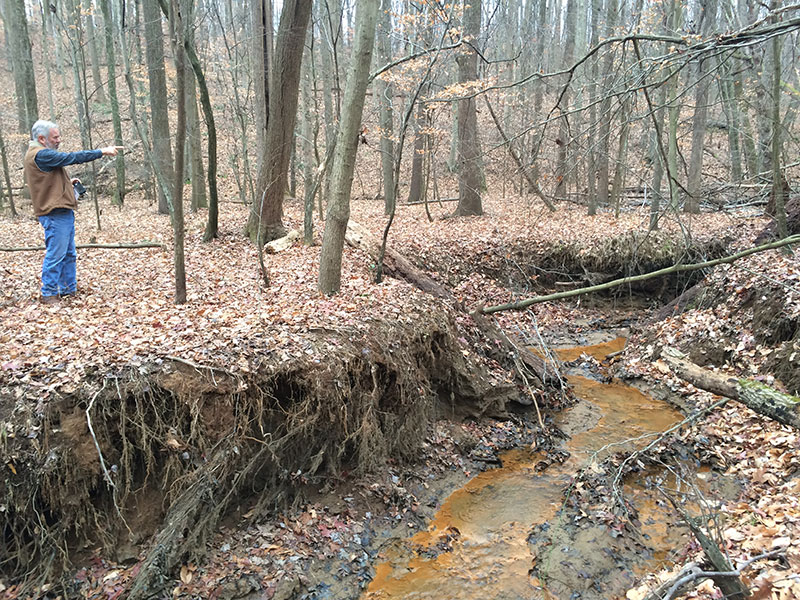
Like home restoration, stream restoration requires a combination of engineering, design, artistry, and construction. But unlike a house, a stream is a dynamic system, constantly adjusting to the changing conditions and forces of nature. It therefore requires knowledge of ecology and, in the case of the Bacon Ridge Branch, the ability to think like a beaver.
The volunteers were employees of Biohabitats, an ecological consulting firm and member of the 1% for the Planet community. Since the early 1980s, Biohabitats has been focused on ecological restoration, regenerating ecosystems like streams, wetlands, and forests that have been degraded by development, stormwater, deforestation, agricultural practices, and other human impacts to the landscape. On this particular Saturday, employees from the firm’s Chesapeake and Delaware Bays Bioregion office were volunteering to do some maintenance on a stream restoration project they had designed and constructed in Anne Arundel County, Maryland.
Most stream restoration projects are constructed using large amounts of boulders and gravel that have to be hauled in from elsewhere. With the Bacon Ridge restoration, however, Biohabitats tried something new. Instead of using rock to create structures to direct the flow of water, protect its banks, and provide habitat, they used wood harvested at the site. Some of the structures, known as “beaver analogs,” are modeled after beaver dams. Areas where wood structures had been placed in the stream to slow down water so that deep pools could form, nutrient-rich sediment could settle out, and water that would normally rush into the South River and Bay would instead overflow the streambanks and spread out onto the floodplain, where excess nutrients and sediment are taken up by the roots of lush vegetation that also provides habitat. But new techniques require monitoring and maintenance, and that is what the volunteer group was out there doing.
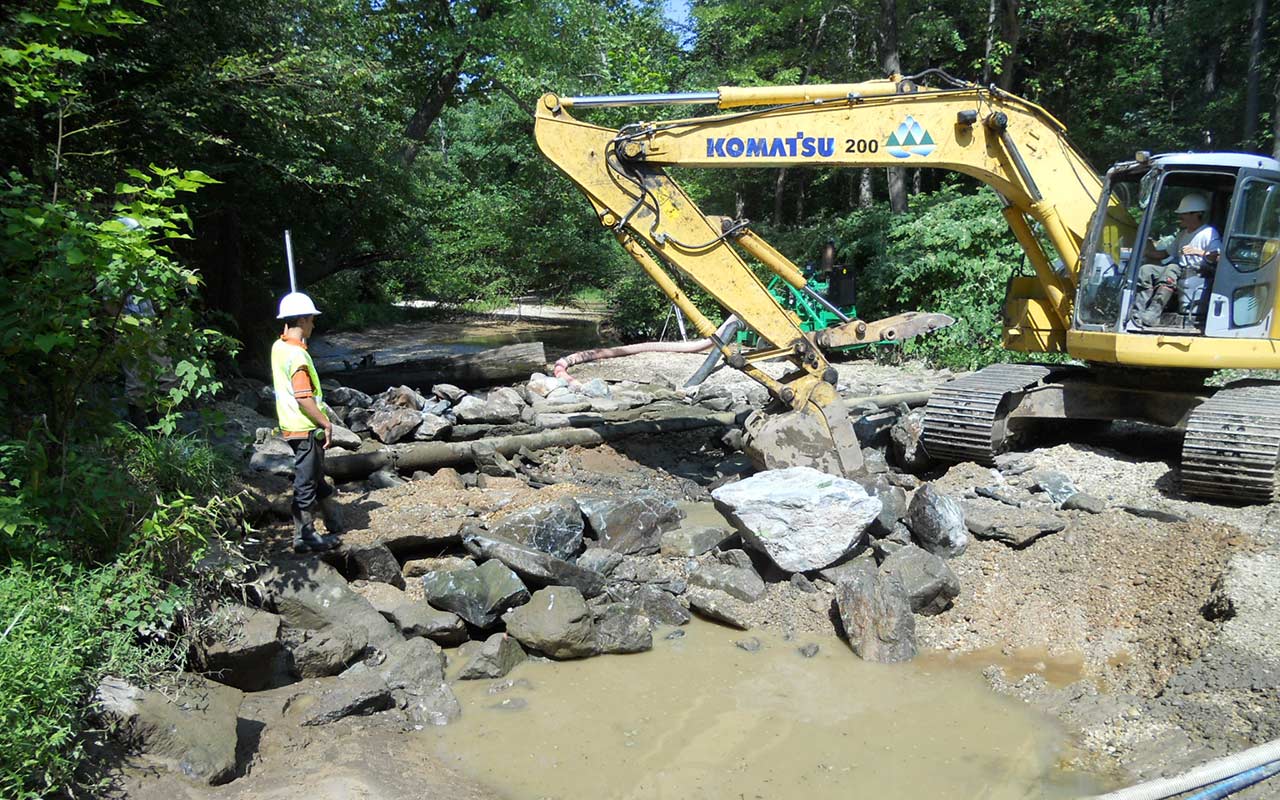
The beaver analogs are designed to hold back water but allow it to flow over the structure in heavy storms. Like real beaver dams, the analogs sometimes need repairs. Biohabitats employees and family members chose to give up a Saturday to make these repairs, not just to keep an eye on their project, but also to donate service as part of something called “Make a Difference Week.”
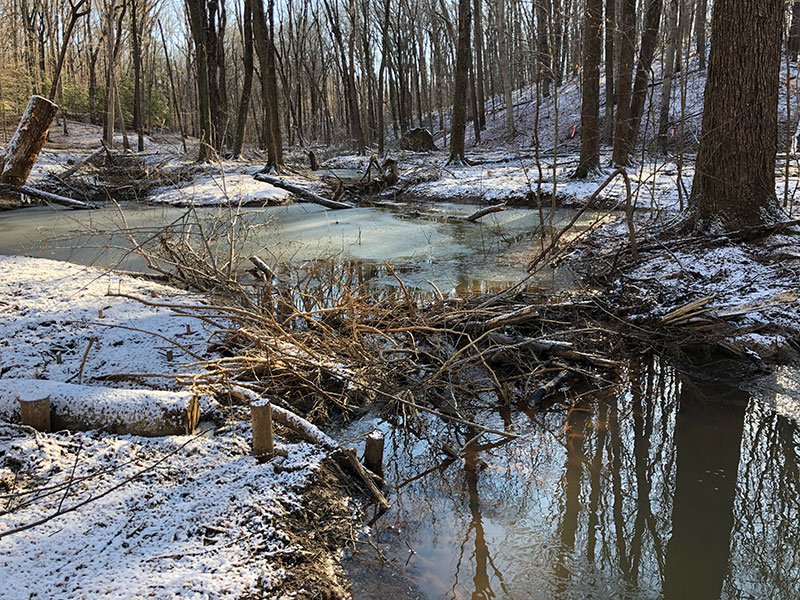
Make a Difference Week is an initiative of the Society for Ecological Restoration, a global network of restoration scientists and practitioners dedicated to advancing the field. The week began on June 5, which was World Environment Day and the official launch of what the United Nations has declared to be the “Decade on Ecosystem Restoration.” Make a Difference Week aims to encourage people to positively impact their communities and engage in hands-on restoration projects. The Decade on Ecosystem Restoration aims to mobilize hundreds of millions of people to restore nature and foster a global restoration culture in which restoration initiatives are scaled up across the planet. The Arundel Rivers Federation is part of the Waterkeeper Alliance, a global organization dedicated to protecting and preserving the world’s waterways, so in a sense, the volunteer day at Bacon Ridge Branch links local, hands-on efforts with global work.

Volunteer labor also helps the Arundel Rivers Federation maintain their restoration projects without sacrificing precious grant and donor funding.
“Like Biohabitats, we really care about the success of our projects,” said Jennifer Carr, Director of Restoration for the Arundel Rivers Federation. “We’re always happy to come out and do some adaptive management to see them succeed.”

To do the adaptive management on the Bacon Ridge Branch restoration, the volunteers turned to the beaver for guidance. With real beaver dams, the sound of running water helps the beaver identify places in their dams that need to be repaired with mud, leaves, and wood. With the beaver analogs, any signs of water flowing swiftly beneath or through the structures is an indication that some repair work is necessary. Although the restoration successfully addressed the six-foot-high eroding banks and raised the water table five to six feet, water was visibly flowing through three of the structures.
“We’re out here today trying to force the water to flow over the structures by working like a beaver,” explained Joe Berg. “We are damming up the front end of the structures”
Volunteers scoured the area for downed trees and limbs and dragged them to the site, where they were cut into smaller pieces and strategically shoved into gaps in the structure. Some shoveled mud into smaller crevices. Others cut downed trees into channel-spanning logs, and added them to the beaver dam analogs, securing them with wooden stakes and a biodegradable fabric made of coconut fiber.
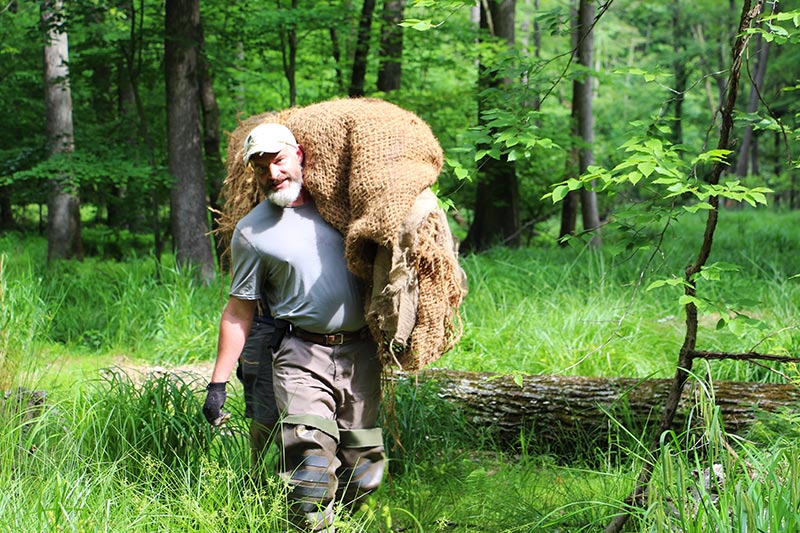
“We’re trying to use the native material as the building blocks of the restoration,” said Doug Streaker, Biohabitats’ principal engineer and designer of the Bacon Ridge Branch restoration. He explained that the wood structures reconnect the stream channel to the floodplain by pushing water up and out. They also provide places for aquatic life like fish and amphibians to live and thrive.
Before being restored, not much lived in the stream.
“When a big storm surge would come through, it would just take everything with it,” said Carr. “That’s the benefit of these pools. They force the water to slow down so you can have native critters thrive.”
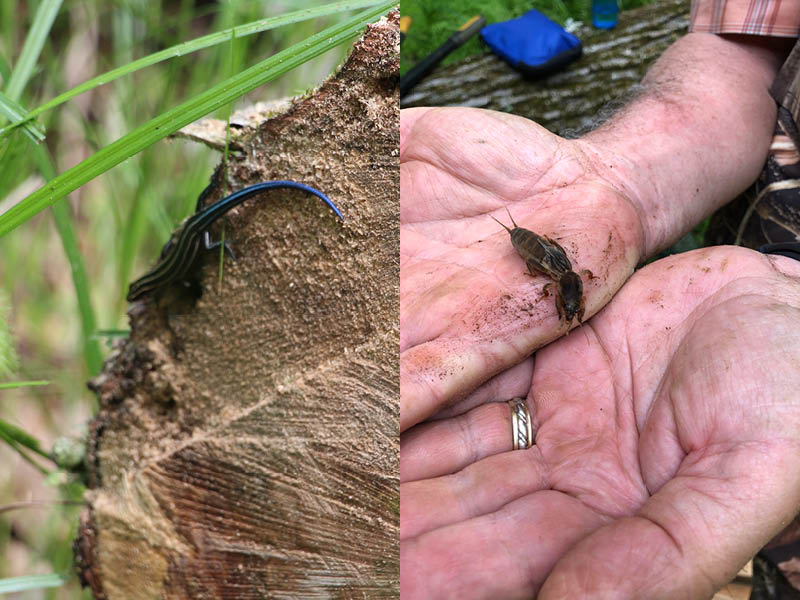
According to Streaker, they are thriving. He said that the number of fish species observed in the stream have increased from one pre-restoration, to eight or nine today.
It was a hot, sweaty, muddy, exhausting day that likely provided the volunteers a new perspective on life as a hardworking beaver, their unknowing partner in river, stream, and floodplain wetland restoration. But for the volunteers, the opportunity to make a difference while immersing themselves in the ecosystems they work so hard to protect was well worth it.

“It’s forest bathing and working with large woody debris,” said senior ecological engineer, Chris Streb. “It doesn’t get any better than that!”
“I got to cut fabric and gather lots of sticks,” said 11-year-old Joey Trumbauer, who recognized the global impact of efforts like his at Bacon Ridge Branch. “If you take care of the streams,” he said, “you take care of the oceans.”
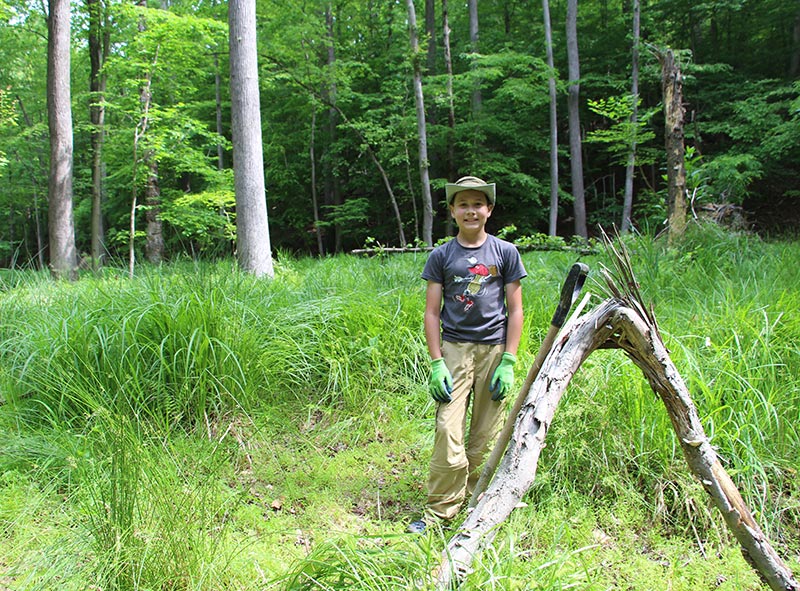
In addition to the intrinsic rewards of volunteering, the day’s efforts also provided an opportunity to help advance this lower cost, lower impact stream restoration technique.
“This approach costs about a quarter as much as typical stream restoration projects, because you’re not buying and transporting loads of materials,” said Berg. “If we have to do some fine tuning to make it more successful, perhaps this approach will be adopted by more people when site conditions make it possible.”
With the beaver dam analog repairs complete, Jennifer Carr and her colony of beaver-inspired Biohabitats volunteers hiked out of the stream valley, their loads—and perhaps their hearts—just a bit lighter.
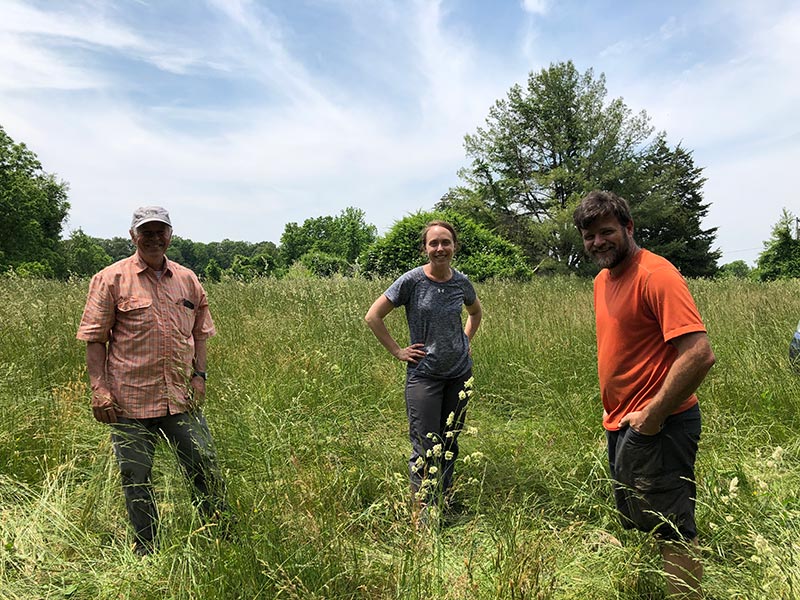
NOTE: To make a difference by supporting or getting involved in ecological restoration:
Contact your local chapter of the Society for Ecological Restoration.
Reach out to your local watershed association, conservation group, environmental organization, and see where your skills and resources align with their need. “You don’t have to get dirty to help,” said Carr. “There is plenty of office work as well.” That can come in the form of grant writing, database management, or general clerical work.
Encourage businesses and organizations in your community to join 1% for the Planet, a diverse and growing community dedicating to supporting environmental causes.
